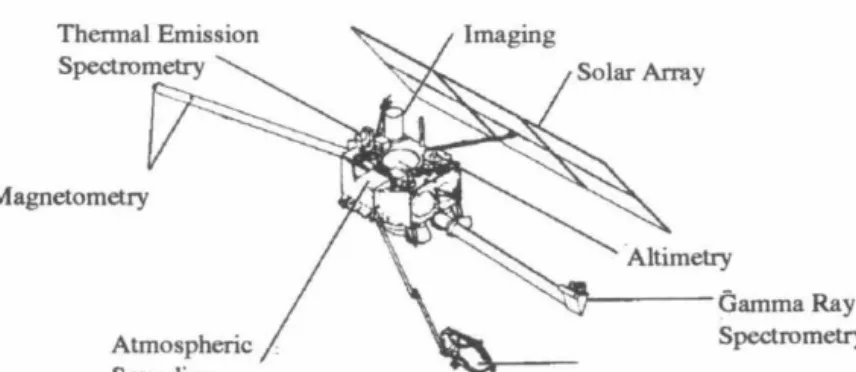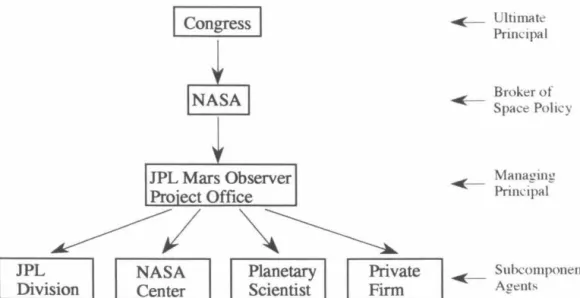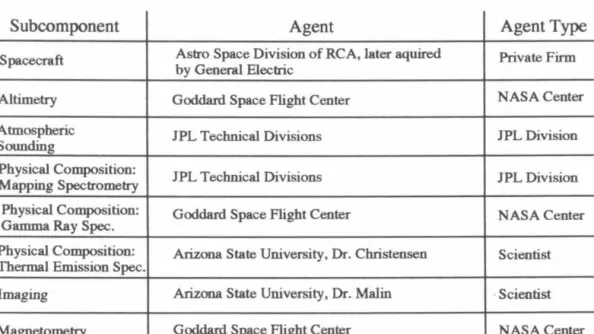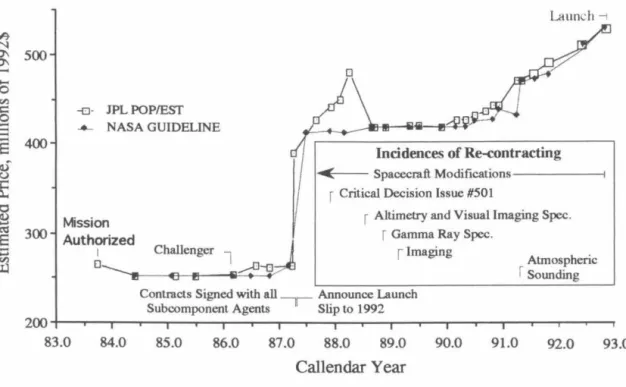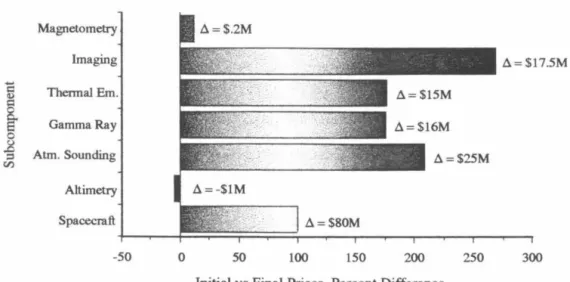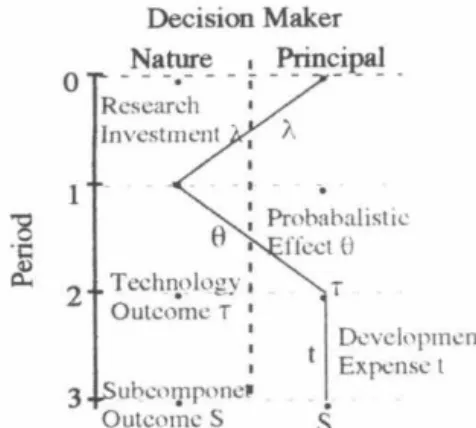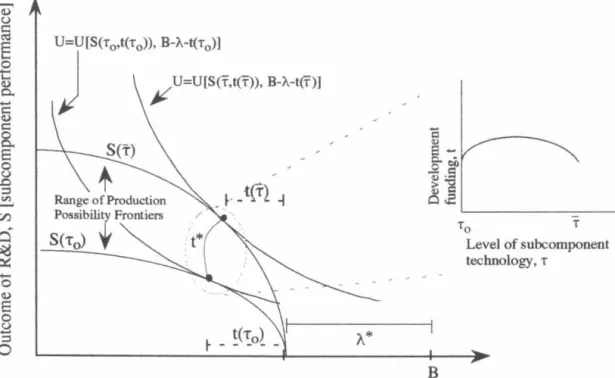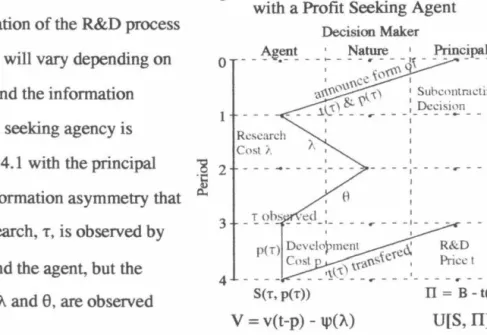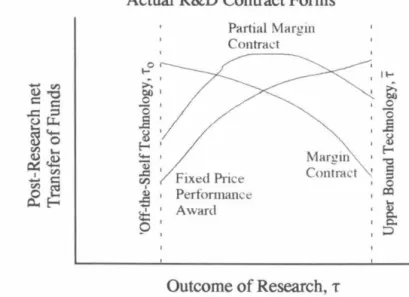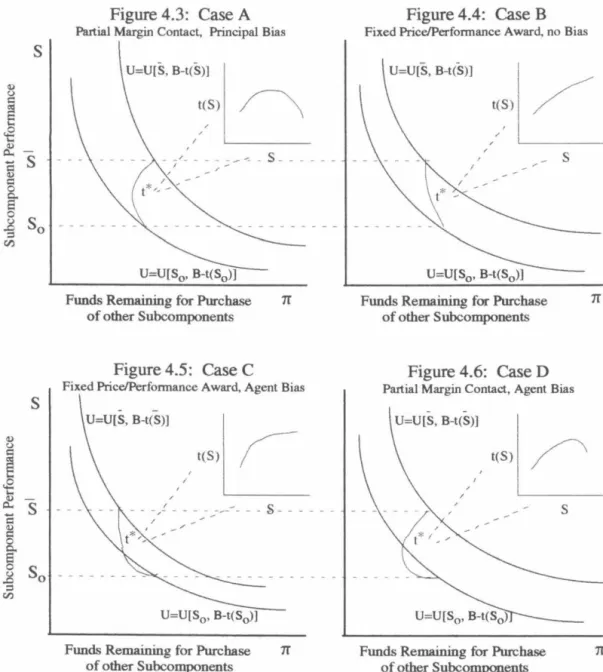The Organization of Production:
Moral Hazard and R&D
Thesis by Charles William Polk
In Partial Fulfillment of the Requirements for the Degree of
Doctor of Philosophy
California Institute of Technology Pasadena, California
1993
(Submitted May 18, 1993)
The Organization of Production:
Moral Hazard and R&D
© 1993
Charles William Polk All rights Reserved
Acknowledgment
I cannot, in all good conscience, consider this thesis complete until I have thanked those individuals who have supported and inspired me.
Most immediately, my thesis advisor Dr. John 0. Ledyard has shown great patience in allowing me a fairly unique route toward this
academic goal. Dr. Ledyard has brought structure and perspective to a work the merits of which would have been far less evident were it not for his involvement. In a similar vein, I thank Dr. Lance Davis, Dr. D.
Roderick Kiewiet, and Dr. David Porter for their inputs to the thesis and for their involvement in my graduate experience at Caltech.
Among the many individuals not directly involved with this thesis but who have critically supported and/or inspired my efforts are Dr.
Thomas Helliwell, Dr. Gary Evans, Dr. Finis Welch, Dr. Jean-Laurent Rosenthal, and Mr. Thomas A. Barber. Critical financial support has been provided by the Flight Projects Office of the Jet Propulsion Laboratory (JPL) and from a grant from the JPL Director's
Discretionary Fund. Substantial material and facilities support have been provided by JPL and Ascension Enterprises, Inc. And finally, my love and thanks must be expressed to my wife Tania, as well as to my entire family, whose support has always been present and pivotal.
ABSTRACT
We model technical innovation of a final good at the subcomponent level. Research and Development efforts are undertaken on
subcomponents, incrementally enhancing the technological inputs to the final good. Through observation of actual R&D procurements, we identify the principal and agents appropriate for such innovation.
Two categories of agent, the conventional profit seeking agent and a performance seeking agent, are identified. A principal who jointly values the capabilities of the subcomponent undergoing R&D and the funds available for purchasing other subcomponents to the final good is identified. The principal does not have a transferable utility function. We characterize optimal R&D production organization between such a principal and each type of agent. In addition to the importance of the information environment between principal and agent, the motivational properties of the principal and agent significantly affect the form and existence of optimal R&D procurement. We draw insights for both private and public sector industrial organization.
Table of Contents Chapter 1: The Role of R&D in Production Organization
Chapter 2: The Pathology of Mars Observer Production Organization
2.0 Description of the Mars Observer Mission 2.1 Management Hierarchy: Definition of Players 2.2 Initial Organization of Production
2.3 Evolution of Subcomponent Development 2.4 Production Outcome
Chapter 3: Vertically Integrated Subcomponent Production
3.0 Introduction to the Analytical Treatment 3.1 The Simple Case of Vertical Integration
Chapter 4: The Effects of Moral Hazard on R&D Procurements from a Profit Seeking Agent
4.0 Profit Seeking Agent within a Subcomponent R&D Model 4.1 Relationship to Past Research
4.2 One Stage R&D Subcomponent Production 4.3 Standard Two Stage R&D Production 4.4 Two Stage R&D Subcomponent Production 4.5 The Relevance of the Observable
4.6 Summary
Chapter 5: The Effects of Moral Hazard on R&D Procurement from a Performance Seeking Agent
5.0 Justification of Performance Seeking Agency 5.1 Subcontracting under Full Information 5.2 Subcontracting under Incomplete Information 5.3 The Relevance of the Observable
5.4 Summary
Chapter 6: An Analytical Treatment of Mars Observer Production Organization
6.0 Segue from Theory to Observation
6.1 Characterization of the Original Bilateral Monopoly Contracts 6.2 Impacts of Different Experiment Agent Types
6.3 The Lack of Observables in Experiment Subcomponent Production 6.4 The Potential Lack of Enforcement in Experiment
Subcomponent Production
6.5 Renegotiation as a Response to Agency Problems
6.6 Appropriate Production Organization for Different Circumstances 6.7 Summary
4 5 9 14 19
22 23
29 31 35 40 43 46 48
49 50 56 61 62
64 67 69 69 70 71 77 79
1
4
22
29
49
64
Chapter 7: Examples of Various R&D Production Organizations 81
7.0 The Cassini Resource Management Plan 81
7.1 The Procurement of Booster Engines for Commercial Satellite Services 82 7.2 Procurement of the Mars Environmental Survey: A Suggested Approach 85
Chapter 8: The Placement of R&D Procurement in Production Organization 92
References 96
List of Figures
Figure 2.1: Mars Observer Spacecraft and Experiments 4 2.2: Authority Hierarchy for the Mars Observer Mission 5
2.3: Mars Observer Price Estimate History 15
2.4: Subcomponent Initial Estimated Prices vs Final Prices 20 3.1: Decision Flow for Vertically Integrated Production 24 3.2: Principal's Utility Space with Sample Indifference Curves, Production
Possibilities Frontiers, Research and Development Funding 27 4.1: Decision Flow if Contracting with a Profit Seeking Agent 29 4.2: Potential ICDR Analogs of Several Actual R&D Contract Forms 31 4.3: Case A: Partial Margin Contract, Principal Bias 39 4.4: Case B: Fixed Price/Performance Award, No Bias 39 4.5: Case C: Fixed Price/Performance Award, Agent Bias 39 4.6: Case D: Partial Margin Contract, Agent Bias 39 4.7: Profit Seeking Agent without an Observable Research Outcome 47 5.1: Decision Flow if Contracting with a Performance Seeking Agent 49 5.2: Interested Agent without an Observable Research Outcome 61
6.1: Initial Spacecraft Contract 68
6.2: Initial Experiment Contracts 68
6.3: New Altimetry Contract 73
7.1: Pre-Challenger Procurement of Satellite Services 82 7.2: Post-Challenger Procurement of Satellite Services 83
7.3: Booster Engine R&D Contract 84
7.4: Suggested Production Organization for MESUR 86
7.5: Craft Auction Matrix 88
7.6: Effect of Actual Envelope on Final Price 88
7.7: MESUR Craft Contract 88
List of Tables
Table 2.1: Initial Organization of Subcomponents and Agents 8
6.1: Contract Renegotiation 71
6.2: Actual Contracts that may Correspond to
Optimal ICDR R&D Contracts 79
7.1: Craft Agency Concerns and Solutions 87
1
Chapter 1: The Role of R&D in Production Organization
Understanding the production organization of a fmal good assembled from numerous subcomponents is of obvious significance. Though an assembly line comes to mind, the image is of little relevance, for an assembly line is the process through which already produced subcomponents are combined in a routine and monitorable manner.
The true question of interest in production organization is how subcomponent production is organized. Three examples are evocative:
Most major automobile manufactures produce their own engines whereas not a single airplane manufacturer produces jet engines.
Many automobile companies produce the suspension subcomponent for their entrants in the sports car market yet purchase the suspension system design from Lotus of England.
Producers of fmished food products purchase NutraSweet from the corporation that holds the patent whereas Mashushita produces its own compact disc systems via a license purchased from Sony and Phillips.
These examples involve technological innovation in the subcomponents that constitute the final good. The fundamental effect of technological progress on production is obvious and well accepted. What are not obvious are the reasons behind the myriad organizational structures between innovator and final producer that we observe.
Subcomponents may be innovated and produced under the management of the final good producer, innovated by one entity and produced by the final good producer, or innovated and produced by one entity and transferred to the final good producer. The organization of subcomponent innovation, hereafter referred to as Research and Development (R&D), is critical to production organization, yet the forms chosen for R&D organization are not adequately explained by either the existing Industrial Organization or Optimal Contacting literatures. In this thesis we attempt an adequate treatment of R&D subcomponent
production organization. A quick review of established theory motivates our approach.
Coase's observation that production is vertically integrated to the degree that the marginal cost of so doing is below that of market contracting provides a unifying
paradigm yet so borders on tautology that little can be specifically explained.1 Alchain's and Demsetz' corollary that production is vertically integrated until the cost of
management forces the marginal cost of internal production to exceed that of market procurement adds little except to suggest that production efficiency within a firm is degraded when subordinates can conceal their inputs to production, thus extracting a rent from management. 2 When subordinates behave this way it is referred to as moral hazard. Williamson expands on Alchain's, Crawford's, and Klein's observation of the significance of bilateral monopoly in complex subcomponent production by illustrating the effects of moral hazard in both internally organized and market contracted
production. 3,4 Past analytical research has concentrated on principal/agent models of single component production with no work expressly considering the effects of subcomponent production. 5
A more useful characterization of the motivating reasons for production
organizations can be attained by analyzing subcomponent production-- emphasizing the organizational significance of the goals of the final good producer and the goals of subcomponent producers. In this thesis we examine subcomponent procurements that require research and development (R&D), a process particularly prone to the influence of moral hazard due to the probabilistic nature inherent in innovation. The effects of the type of final product, the interests of the principal, and the interests of the potential agents are considered in characterizing optimal organizational arrangements (contracts).
1 Ronald H. Coase, "The Nature of the Firm," Economica, New Series, vol. 4, 1937.
2 Armen A. Alchain, Harold Demsetz, "Production, Information Costs, and Economic Organization,"
The American Economic Review, vol. 62, no. 5, 1972.
3Benjamin Klein, Robert G. Crawford, and Armen A. Alchain, "Vertical Integration, Appropriable Rents, and the Competitive Contracting Process," The Journal of Law and Economics, vol. 21, no. 2, 1978, page 299.
40liver E. Williamson, "Transaction-Cost Economics: The Governance of Contractual Relations," The Journal of Law and Economics, vol. 22, no. 2, 1979.
5The works of Laffont, Tirole, Holmstrom, and others represent analytical trea~ents of simple optimal contracting in the presence of moral hazard. The classic moral hazard optimal contracting literature is examined in greater detail in Chapter 4.
3
One of the primary goals of this research is to provide practical insight into why and how production, particularly innovation, should be organized; thus, it is natural that case studies be examined for both guidance and credibility. Rather than cataloging the characteristics of existing production organizations under the assumption that 'to be is to be optimal', we attempt to uncover the principal/agent genesis of production
organizations by examining the pathology of a production organization that was rendered non-optimal due to poor acknowledgment of moral hazard. Production of the Mars Observer planetary mission (launched in September of 1992) required the organization of an array of agent interests within a multiple component R&D production process.6
Studying the evolution of the subcomponent contracts for Mars Observer reveals a non- optimal production organization that illuminates the importance of moral hazard, and, thus, the relevance of principal/agent concerns in R&D production organization.
The thesis is organized as follows: We first study the physical nature of the Mars Observer production process, the motivational differences between the principal and the different agents, and the historical evolution of subcomponent production organization.
We proceed through a structured, analytical modeling of the types of production
organization highlighted in the Mars Observer experience with the intent to characterize -general optimal contracting arrangements. Using this analytical structure the Mars
Observer experience is assessed, highlighting the ramifications of contracting without regard for moral hazard. Thereafter, general principles of optimal R&D subcomponent production organization are applied to several examples of existing and potential final good production. The thesis concludes with a perspective that supports an understanding of why production in a complex economy is organized as it is and how certain production might be better organized.
6Tbe same can be said of all 'Big Science' Projects.
Chapter 2: The Pathology of Mars Observer Production Organization 2.0 Description of the Mars Observer Mission
The two Viking missions to Mars in the mid- to late 1970's were designed to conduct detailed measurements at two points on the Martian surface, with orbital imaging employed primarily to assess potential landing sites. The results of the orbital imaging and the scientific information from the two landing sites raised substantial questions about the geologic and climatologic natures of Mars on a global scale. These questions led to the Mars Observer mission which was authorized by the Office of Management and Budget (OMB) in October 1983 (later by the U.S. Congress) and delegated to the Jet Propulsion Laboratory (JPL).
The intended final good from the Mars Observer mission is new information about Mars. To produce this final good, a number of subcomponents have to be
produced, assembled, and operated: experiments (conducted using various instruments) and experiment support systems (transport, power, communications, etc ... ). Selection of the experiment and support system producers occurred in April 1986 with substantial funding beginning in mid-1986.
Figure 2.1 illustrates the Mars Observer spacecraft and experiments as launched on September 25, 1992. The price of the mission has been recorded at approximately
$530 million ( 1992$) over the period from October 1983 to October 1992. The original Figure 2.1: Mars Observer Spacecraft and Experiments
Magnetometry
"->"'!',__ _ _ Gamma Ray
Spectrometry
5
budget for the mission was approximately $250 million (1992$). The experiments shown are less ambitious than those that were selected in 1986. When launched, the spacecraft was capable of transporting more mass and supplying more power than was required even though several of the experiment subcomponents had made mass and/or power reductions that resulted in decreased capabilities and/or cost increases. This physical resource surplus indicates a production organization that was ex post sub-optimal, a conclusion heightened by the substantial price overrun for the mission.
2.1 Manaeement Hierarchy: Definition of Players
Production of the Mars Observer mission was organized within a hierarchy leading from the funding source to the producers of the various subcomponents as illustrated in Figure 2.2. Between Congress and the Subcomponent Agents rests NASA, the agency of the Executive authorized to conduct the mission, and the Mars Observer
Figure 2.2: Authority Hierarchy for the Mars Observer Mission
JPL Division
I
CongressI
NASA Center
~
Planetary Scientist
~ Ultimate
Principal
~ Brokerof Space Policy
Mana"ill"
~ : : : e
Prim:ipal
Private
I
~ SubcomponentFirm Agents
L . . . - - - '
Project Office of the Jet Propulsion Laboratory (JPL), the agent selected by NASA to organize mission production. The Project Office acts as a primary source of advice to NASA when critical subcontractors are selected and is responsible for negotiating and
implementing all subcomponent contracts. Given this status, the Project Office can be thought of as the Managing Principal, a type of intermediate agent to whom is delegated the responsibility of pursuing the wishes of the Ultimate Principal. The standard
information asymmetry, which creates an environment for moral hazard, pertains;
namely, each Subcomponent Agent has clearer information about the production status of their subcomponent than does the Managing Principal.
Figure 2.2 indicates four general types of agent for the various subcomponents.
These agent types are most tellingly distinguished by their differing interests relative to participation on the mission:
A JPL Divisional or NASA Center Agent can be motivated by the performance of their subcomponent; however, institutional interests commensurate with maintaining or advancing their position within their parent organization may cause such an agent to value funding
independently. For example, the wish to maintain or win some other contract may encourage the reallocation of funds, quality labor, or physical resources away from the particular subcomponent. 7
Inclusion as an experiment subcontractor can fundamentally affect the career of a planetary scientist; thus, a Scientist Agent can be thought of as
primarily motivated by the performance of his experiment. 8 This will put him in partial agreement with the Project Office which values some balanced measure of performance from all of the experiments.9
Ignoring any repeated game effects, the Private Firm Agent will be a profit seeker.10 He has no fundamental concern with the performance of his subcomponent and wishes to charge as much as possible for whatever work he does or can claim to have done.
?The standard organizational arrangement between a NASA-funded Project Office and a NASA Center or JPL Divisional agent legally forbids the agent from directly profiting from the arrangement. However, such an agent has numerous non-performance uses of funding including: the number of assigned
employees, office equipment, and labor/capital allocations among a project portfolio.
8 Planetary Science missions to any one destination are infrequent and, from a career standpoint, not easily foreseen. A scientist agent for an experiment may shape the type, quality, and dissemination of the data from his experiment Further, he is often granted a one year monopoly right to data from the moment it is received. Thus, presence as an experiment agent has a fundamental career-long worth to a scientist.
9Graft is still a possibility; however, the assumption is that a scientist's long-term carrier motivation to lead his field through a successful outcome from his experiment will dominate short-term motivations to commit graft. The prohibition on profit is accompanied by a prohibition on loss - the scientist may not be compelled to absorb any production costs even if his subcomponent fails to operate.
lOUniike planetary scientists for whom planetary missions represent almost all demand for their wares, private aerospace subcontractors have many other markets; therefore, any rationale that a reputation effect will throttle moral hazard profiteering by a private firm agent is suspect as the NASA 'market' and the standard aerospace market may be too dissimilar for a 'bad' NASA reputation to have any binding effect ..
It will be assumed that the interests of the ultimate principal, Congress, can be fully characterized by two related qualities of the mission: the price paid (funds appropriated) and the performance attained. II It will further be assumed that the 'contract' between the Congress and the Project Office (through NASA) appropriately rewards or punishes the Project Office for managing the mission with respect to the interests of the Congress.12 Thus, it is reasonable to assume that the Project Office will organize the production of mission components to maximize the price/performance outcome relative to congressional values, with appropriate compensation to the Project Office. From this perspective the differences between the interests of the Project Office and the Agents can be highlighted:
A JPL Divisional or NASA Center Agent, by valuing the performance from its experiment, will value a subset of the overall performance measures valued by the Project Office. Partial agreement implies partial disagreement; thus, unbridled pursuit by the agent to enhance the
performance of its experiment may un-balance the overall measure of performance valued by the Project Office. Further moral hazard is present because of this agent's independent valuation of other uses of funding which is in direct opposition to the Project Office's interest in maximizing a balance of performance and mission price.
A Scientist Agent, by valuing the performance from its experiment, may pursue funding in a manner at odds with the overall performance interests of the Project Office. Also, any valued use of funds other than experiment R&D may put this agent at odds with the interests of the Project Office.
In a wholly conventional and obvious fashion, the interests of the Private Firm Agent are completely opposed to the interests of the Project Office.
Several clarifications should be placed on agent status that provide insight into the many tiered complexity of this R&D production process and a clearer justification for considering the Scientist Agent to be a distinct type from the JPL Divisional and NASA Center Agents. An agent for a particular subcomponent will most likely have
11 Performance will be considered as some measurable increase in the body of scientific knowledge about the target of the mission. As this scientific knowledge is multi-disciplinary, 'balanced' increases are assumed to be preferred to increases skewed toward one discipline. An indication of a preference for 'balanced' science return from a mission can be inferred from the experiments selected.
12This assumption simplifies the examination of the organizational relationships between the sub- contractors and the managing principal; however, the assumption is strong and arguable.
subcontractors of its own. Further, one of these lower level subcontractors can be a member of one of the four general agent types. For example, a NASA Center may be under contract to the Project Office to produce the instrumentation for a particular experiment for which the Center subcontracts to a chief scientist and several private firms. In an additional complication, two of the possible agent types are subdivisions of organizations that 'out rank' the Project Office; i.e., a JPL Division is a pre-existing subsection of JPL and a NASA Center is a constituent part of NASA with equal overall hierarchical position to JPL. Thus, the actual authority wielded by the Project Office over agents of these two general types is questionable. Strong institutional interests at NASA or JPL might work to countermand Project Office directions. The potential ramifications of 'out ranking' the Managing Principal requires distinguishing the Scientist Agent from the JPL Divisional or NASA Center Agent.
The initial organization of subcomponents and agents for Mars Observer is provided in Table 2.1. It should be noted that the vast majority of the subcomponents of the mission were subcontracted; almost none of the actual design and production was to be directly supervised by the Project Office.
Table 2.1: Intitial Organization of Subcomponents and Agents
Subcomponent Agent Agent Type
Spacecraft Astro Space Division of RCA, later aquired Private Finn by General Electric
Altimetry Goddard Space Flight Center NASA Center
Atmospheric JPL Technical Divisions JPL Division
Sounding
Physical Composition:
JPL Technical Divisions JPL Division
Mapping Spectrometry Physical Composition:
Gamma Ray Spec. Goddard Space Flight Center NASA Center
Physical Composition: Arizona State University, Dr. Christensen Scientist Thermal Emission Spec.
Imaging Arizona State University, Dr. Malin ·Scientist
Magneto me try Goddard Space Flight Center NASA Center
2.2 Initial Organization of Production
Initially, the Spacecraft contract was comprised of two distinct and sequential payment streams: a pre-determined series of payments leading up to launch, followed by a stream of contingent payments that would be transferred to the contractor over the life of the mission if the spacecraft performed properly. This type of contract was designated as a Fixed Price Performance Award contract. By using a fixed price contract for a set of pre-defined performance requirements the spacecraft agent was to have no opportunity to seek additional funding from the Project Office for any actual or claimed 'unlucky' occurrences. Such actions by the spacecraft agent were to have been eliminated by, in effect, agreeing to a subcomponent price sufficiently high to allow the agent to
comfortably self-insure against 'unlucky' outcomes while providing no incentive to misrepresent progress.
All experiment subcontracts were to be margin contacts, a contract that explicitly recognized the unknown tradeoffs between performance and price at the start of an R&D process: An experiment agent was provided with an initial funding allocation to start R&D production. Subsequent funding allocations were provided in accordance with the price/performance tradeoffs for the technologies that emerged from the early stages of R&D production. A margin pool was to be held by the Project Office from which these subsequent allocations would be made.
The policy of margin management was standard practice and was considered analogous to an insurance pool guarding against the incidence of 'bad luck' attendant to R&D in state-of-the-art instrument production. To a point, the more 'unlucky' the initial research efforts, the greater the subsequent margin funding. Moral hazard was to be guarded against by monitoring the purported 'bad luck' necessitating the margin
allocation request. Standard margin policy does not set firm rules regarding the extent to which any agent may draw from the margin pool relative to the expressed needs of other
agents. Margin allocations would be decided in real-time by the Project Office and would not be subject to any prior agreements.
Obviously, all of the experiments, once the instruments are built, are integrated with the spacecraft and propelled to Mars. Consequently, the mass, power usage, and volume that the instruments require from the spacecraft represent resources which must be produced in concert with the experiments if the assembled mission is to result in the final good desired; namely, science return from Mars. As with funding, all physical experiment resources were organized with contracts featuring centrally held margin pools and standard margin management.
When an experiment receives changes in physical resource margin allocations, the contracted configuration of the spacecraft must often change. This is most obvious when mass margin allocations affect the center of mass for the assembled mission, requiring the addition of counter-balancing 'dead weight' and/or the repositioning of numerous
components. Contractually, such a change is the fault of the Project Office; thus, the spacecraft contract must be reopened and the spacecraft contractor must be compensated for the change. Through this dynamic, the Fixed Price Performance Fee contract, and its laudable qualities countering agency concerns, can be rendered void. The contract can effectively become a cost-reimbursable contract with price increases driven by
experiment margin allocations and moral hazard profiteering by the spacecraft agent.
This possibility did not go un-noted by the Project Office. At the earliest stage of Mars Observer production organization design, an instrument module, produced by JPL, was to provide the physical interface between the experiments and the spacecraft. The total of all physical resources used by the instrument module and all instruments integrated on it was to be fixed with the Project Office allocating resource margins defined within this fixed total. In this manner, the spacecraft contractor would see a credibly fixed interface and know he was truly subject to a fixed price contract. But, the JPL Project Office was concerned over the funding and physical resources that an
instrument module would require at the expense of other mission subcomponents. This concern resulted in the deletion of the module from the mission.13 The recognition that this might cause incentive problems is apparent from the following view expressed by the Assistant Laboratory Director for Flight Projects during the period when module deletion was being discussed:
"This is a sticky wicket. Somehow we have to maintain the concept of a module thru the Bus (Spacecraft) selection process .... The main worry I have in abandoning the idea of the payload module is that we might lose some element of control over the experimenters' appetites (for funds, mass, power, etc .. ) which the spacecraft contractor would be only too happy to satisfy- and submit the bill later." 14
Still, the instrument module was deleted, with no compensating changes made to any other parts of the production organization design.
The spacecraft contract allowed Project Office changes via a mechanism called the unilateral modification- the Project Office unilaterally directs the contractor to make a change to the contracted effort. The unilateral modification mechanism contains a 'time is of the essence' clause which allows the Project Office to authorize the contractor to begin work on the modification before the two parties have agreed on a price for the modification. At the time that proposals were requested from potential subcontractors, the module had been deleted and the planned contracting organizations, including the unilateral modification mechanism, were public knowledge. Thus, bidders for the spacecraft contract could easily assume that the experiment margin management policy would result in substantial unilateral modifications to the spacecraft contract, with the selected contractor in a monopoly position at the time of price re-negotiation. Substantial extra profit potential therefore existed because of the non-fixed nature of the Fixed Price Performance Fee contract. An additional ramification of the unilateral modification mechanism is that since all potential spacecraft contractors knew that, if selected, they
13MGCO Project Management Report, March 23, 1984.
14W. Giberson (JPL ALD), Handwritten note on a copy of JPL Interoffice Memorandum of W. Purdy,
re: 3/14/84 RFP Meeting with Code EL, March 9, 1984.
were unlikely to have to deliver the bid spacecraft at the bid price, there is little reason to believe that the bid prices represented reliable cost or comparative advantage information.
With the exception of Magnetometry, all of the experiments were to use instruments that represented state-of-the-art designs This was reasonable because the state-of-the-art for Mars instruments was defmed by the early 1970's technology used on the Viking missions. Commensurate with the developmental status of their instruments, most of the agents requested funding for some form of prototyping; from concept-testing breadboarding to full engineering models. IS
The Mars Observer Mission had been 'sold' to the Office of Management and Budget and then later to the Congress as a more cost effective way of undertaking planetary exploration featuring the use of existing "off-the-shelf' technologies, private industry, rapid production, and a price tag of $250 million (1992$). When the
subcomponent contracts were signed (most by late 1986) the Project Office was under intense pressure from NASA to constrain the estimated total cost of the mission to $250 million (1992$). Thus, all tasks not specifically related to production of flight hardware were disallowed.16 By disallowing all prototyping, monitorable indicators of progress on the various experiment R&D efforts were consciously discarded by the Project Office.
On November 13, 1986 the Project Office recommended to NASA that contracts be initiated with all of the experiment agents at levels of funding that, when added to the spacecraft fixed price, totaled less than $250 million (1992$). However, the Project Office also recommended that NASA and the Congress provide additional funds to cover
15Tbat such requests had to be made is suggestive of the type of contractual relationship between the Project Office and the instrument agents -- detailed production plans had to be submitted with all aspects subject to Project Office approval. Thus, when the Camera (Imaging) agent reported that through the use of a lighter and stronger casing material he could increase the camera primary mirror from 25 em to 35 em, substantially increasing performance without increasing total mass or cost, he had to request permission to do so. [Mars Observer Project Management Report, June 26, 1986.]
16Mars Observer Project Science Group Meeting Minutes, First Meeting, F. Palluconi, and Section L, April23 and 25, 1986.
the developmental nature of the instruments.17 This was a clear admission by the Project Office that the subcontracted prices were not credible.
The potential implications of the margin management structure employed to organize Mars Observer experiment production are straightforward. Because of moral hazard, incidences of bad luck will be reported as the basis for a margin allocation request if the agent judges the current environment (size of margin pool, disposition of Project Office, etc .... ) to be conducive to maintaining experiment status. Incidences of good luck will go unreported if the agent feels that a reverse margin policy would commandeer his good fortune to compensate for someone else's purported misfortune. Thus, resource savings from good luck will be (i) retained by the agent as insurance against future bad luck, (ii) used to increase performance (by a performance motivated agent), or (iii) transformed into monetary savings and pocketed (by a funding motivated agent).
Knowing that his estimates need not be credible and that he will probably be at least partially compensated in the future with margin allocations, an experiment agent can willingly submit or agree to 'optimistic' initial estimates. Further, the agent is relieved of the need to manage its production organization in as rigorous a manner as if its resource estimates were somehow binding. Cost increases over initial cost estimates were inevitable.
The experiment and spacecraft agents were selected in the period immediately after the Challenger disaster; NASA funding was being restructured and launch dates and conditions for future missions were undergoing substantial re-planning. In the pre-
Challenger plan, Mars Observer was to be launched in August 1990; however, by August 1986 the decision had been made to postpone the launch until September 1992. For reasons beyond the purview of this thesis, the Project Office had to publicly claim that Mars Observer was being actively organized for a 1990 launch while at the same time it
11Mars Observer Project Management Repon, November 20, 1986.
had to manage the project in accordance with a 19921aunch.18 On Apri114, 1987 the postponement to 1992 was officially ordered. By this date, contracts with all
subcomponent agents had been initiated along the lines described above.
Based on the additional two year wait for information return and using the consequences of the Challenger disaster for fiscal cover, a six month effort to redefine Mars Observer for 1992 commenced in May of 1987. Risk of failure was to be lessened by increasing redundancy where ever practical. All experiment instrument designs were re-evaluated to enhance the science return from the mission. The spacecraft contractor was asked, via the unilateral modification process, to redesign and accommodate all of the enhancements as they were approved.
At this point, approximately 5% of all eventual funds had been allocated toward the subcontracts, no actual hardware had been produced or tested, and most designs were incomplete. Although the specific subcomponents had yet to be agreed upon, the
participants had been contracted with and the basic structure of the contracts did not change. The situation can be seen as a collection of bilateral monopolies with the Project Office as a monopsonist party to a set of monopolist suppliers. The appropriate
description of the initial organization of Mars Observer production is:
Mars Observer production was initially organized as a set of bilateral monopolies governed by one very un-fixed, fixed price contract and a set of cost-reimbursable contracts that were to be implemented under the margin management process.
2.3 Evolution of Subcomponent Development
After the launch delay was official, the reported estimated costs escalated quickly and dramatically as shown in Figure 2.3. By November of 1987, estimated costs were so
18Charles Polk, Mars Observer Project History, JPL D-8095 (internal document), December 1990.
15
great that NASA refused to support the project as organized and issued Critical Decision Issue (CDI) #501, requesting information from the Project Office on ways to reorganize (re-contract) the mission to reduce the estimated cost. This led to the mission descope decision of September 1988 in which the mapping spectrometry experiment was deleted from the mission and the instrument for conducting the altimetry experiment was
downgraded from a radar altimeter to a laser altimeter, with a different agent and contract.
( A
C"'
~ 500 ...
...
0 en
Figure 2.3: Mars Observer Price Estimate History
Launch -1
.9
-o- JPL POP/EST=
_._ NASA GUIDELINE"§ 400
!: 8
13.
~ MissionE 300 Authorized
·.;:::: I
~ D
'IIIII( Spacecraft Modifications---i
r Critical Decision Issue #501
r Altimetry and Visual Imaging Spec.
r Gamma Ray Spec.
1 Imaging
Contracts Signed with all----r-Announce Launch Subcomponent Agents Slip to 1992
Atmospheric
r Sounding
200+-~-,-~-~~--~-T--T--r--T--r--r--r--r--r--r--r--.-~-,
83.0 84.0 85.0 86.0 87.0 88.0 89.0 90.0 91.0 92.0 93.0
Callen dar Year
The September 1988 re-contracting was the first of several changes made to the bilateral monopoly contracts over the next four years, mostly characterized by changes in the agents contracted to manage the subcomponents. Figure 2.3 indicates the timing and identity of these re-contracting steps: Substantial experiment re-contracting occurred in distinct steps while spacecraft re-contracting occurred incrementally over many unilateral modifications. The remainder of this section will briefly describe the changes in agents, motivations, and production organizations (contracts) that accompanied the re-contracting actions indicated in Figure 2.3.
Spacecraft Re-Contracting
The spacecraft contract was modified from 1988 through 1992 by a series of unilateral modifications issued to accommodate the growing resource demands of the instruments and the growing demands of the Project Office to enhance expected
performance. As a rule, the charged price of later modifications exceeded the prices that the Project Office initially expected based on earlier modifications.19 Increasing
expenditure combined with concern over expected performance (quality) led the Project Office to increase JPL on-site monitoring of the spacecraft contractor and to impose JPL production practices on the contractor.20 All designs, production processes, and
inspection specifications had to be reviewed and approved by the Project Office. Hence, spacecraft production management was partially internalized by the Project Office.
Rather than subcontract for a spacecraft, the Project Office arranged to 'Rent a Firm' to produce a spacecraft.
Altimetry Re-Contracting
The altimetry subcomponent to science information was initially to be
implemented with a radar altimeter. The radar altimeter was eliminated and replaced by a laser altimeter as part of the 1988 re-contracting response to NASA CDI #501. Like the radar altimeter, production of the laser altimeter was managed by NASA's Goddard Space Flight Center. However, the individuals directing the production were different and the contract with the Project Office was fundamentally different -- the laser altimeter would not be produced under a margin management, cost-plus contract. Rather, $11 million (1992 $)was allocated within which the altimeter team was free to make all performance,
19-rbe hardening of the spacecraft contractor's bargaining position as the project progressed is hardly surprising. The nearer to completion, the more expensive it would be to replace the spacecraft contractor with another contractor. Perhaps more significant, the nearer to completion, the more money Congress had 'sunk' into the mission and the less credible is any threat by the Project Office to delay, suspend or
terminate the contract
20At no point was an increase in post-launch performance incentive payments implemented rather than these increases in monitoring and intrusion. [see Chapter 6 for a discussion of the ramifications of this]
17
cost, schedule, and quality tradeoffs that it felt necessary. Only three restrictions were placed on the development effort:
• Interface requirements with the spacecraft must be met.
• If it appeared that the $11 million allocation would be exceeded, production of the laser altimeter would be terminated.
• If it appeared that performance would drop below some minimum level, production of the laser altimeter would be terminated.
Additionally, the individuals responsible for the laser altimeter knew that success would save Goddard's position relative to the science output of the mission; thus, career
enhancing performance, though contractually a residual to price, figured in the motivation of the new altimetry subcomponent agent.
Atmospheric Sounding Re-Contracting
Within one year of the 1988 mission descoping, the Project Office was so seriously concerned about the magnitude of eventual margin requests by the JPL
Divisional Agent responsible for the atmospheric sounding experiment that it considered downgrading the performance of the experiment.21 Nevertheless, repeated discussions between the Project Office, the Divisional Agent, and upper JPL management resulted in the continuance of the initial contractual relationships. 22 Margin allocations mounted until the atmospheric sounding experiment was consuming the vast majority of the margin pool. Even at this point, approved margin funding was far less than the requests made by the JPL Divisional Agent In May of 1991, the initial subcontract was
terminated and direct production management was internalized with the Project Office.
Production was suspended so that existing funds could be reallocated to the other instruments while additional funding was solicited from NASA for the atmospheric
21Mars Observer Project Management Repon, July 28, 1989, page 3Ca.
22JPL Interoffice Memorandum from David Evans, Mars Observer Project Manager to Kane Casani, JPL Division Manager responsible for the Atmospheric Sounder, March 20, 1990; and JPL Interoffice Memorandum from David Evans and Kane Casani to John Casani, Assistant Laboratory Director for Flight Projects, June 11, 1990.
sounder.23 Once additional funding was in place, the Project Office directed a 'catch-up' production path resulting in the late arrival of the instrument for integration on the spacecraft. 24
Gamma Ray Spectrometry Re-Contracting
According to at least one analysis, the gamma ray spectrometry experiment barely escaped elimination in the 1988 mission descoping.25 Funding and physical resource margin requests by the Goddard agent became an increasingly serious problem. The Project Office considered the agent to be unresponsive to requests for information, direction, or concerns over the course of subcomponent production. The Project Office strongly requested and eventually received a restructuring of the effort within Goddard with the responsible agent being replaced and the efforts being reassigned to another section of Goddard. 26
Imaging Re-Contracting
The imaging experiment was initially contracted to a scientist agent who was a faculty member at an American university. This is the standard arrangement when the subcomponent agent is a scientist. In this arrangement, part of the funding allocated to the agent is absorbed by the sponsoring university for staff benefits, facility use, etc. In this instance, the scientist agent became disaffec~ with the level of support that his university was willing to supply.27 Believing this support to be inadequate, the agent
23Mars Observer Budget Status Report, presented to Dr. W. Huntress, March 6, 1991, GEC-35, 36;
and Mars Observer FY91 3rd Quarterly Review, May 16, 1991, GLR-4.
24Late arrival for integration violated the spacecraft contract and required, of course, that a unilateral modification be issued by the Project Office to cover the costs of late integration.
25see Charles Polk, 1990.
26official JPL letter from John Casani, Assistant Laboratory Director for Flight Projects to Dr. James H. Trainer, Associate Director, NASA/Goddard, November 17, 1989; Mars Observer Project Management Report, October 26, 1989, page 3Ca; Mars Observer FY90 1st Quarterly Review, December 5, 1989, page DDE-9; Mars Observer Project Management Report, December 21, 1989, page 2Alb.
27official JPL letter from David Evans, Mars Observer Project Manager to Marius B. Weintreb, NASA Program Manger for Mars Observer, July 5, 1990.
internalized the support functions normally subcontracted to the sponsoring university by terminating his position with the university, forming his own corporation, and managing the support functions through this corporation.28 This was possible as the 'property right' to the experiment contract with the Project Office was vested with the contracted scientist agent and not with his university. During and after this bit of agent inspired re-
contracting, NASA dictated the allocation of substantial additional funds to the imaging experiment due to renewed emphasis on Mars exploration and the attendant interest in imaging products. Thus, re-contracting was also directed from above. The imaging instrument none-the-less required substantial margin allocations; however, neither the subcontracted agent nor the contract form were altered.
Commentary
Of the major subcomponents, fundamental re-contracting was carried out for six of the eight. Such re-contracting was characterized by a change of agent, a change of contract form, or the outright elimination of the subcomponent. Among the science gathering subcomponents, only the thermal emission spectrometry experiment and the
re-contractin .
2.4 Production Outcome
Given that the final product being purchased is scientific information about Mars, the actual outcome of production does not yet exist as of today. However, all of the physical hardware intended to supply the subcomponents for this scientific information have been assembled and sent on their way to Mars. Thus, the production process
through final assembly can be analyzed as a proxy for final product analysis if we assume that the hardware will perform as advertised.
Figure 2.4 compares the reported estimated cost of each of the subcomponent contracts, when the conditions of bilateral monopoly were initiated, with the final
28E-mail message from Dr. Michael C. Malin, Principal Investigator of the Mars Observer Camera to Thomas E. Thorpe, Mars Observer Project Science Manager, June 15, 1990.
subcomponent prices paid by the Project Office. 29 For the experiments, the differences in these figures provide a broad indication of the total margin allocations transferred from the Project Office. Further, much of the difference between initial and final spacecraft prices is attributable to the incremental, experiment driven unilateral modifications to the spacecraft contract -- this too is an allocation of margins to the experiment by the Project Office. One caveat should be stated-- physical resource margin increases (e.g., mass) for different experiments affected the spacecraft design differently. Therefore the portion of the spacecraft price increases attributable to experiment margin allocations cannot be apportioned among the experiments directly by their margin allocations.30 Spacecraft unilateral modifications were often issued by the Project Office to accommodate
numerous experiment margin allocations and there is no dependable accounting approach available to deduce the spacecraft price increases attributable to each experiment.
Figure 2.4: Subcomponent Initial Estimated Prices vs Final Prices
Magnetometry
Imaging ~=$17.5M
Thermal Em.
Gamma Ray Atm. Sounding Altimetry
~=$80M
Spacecraft
~~~~=r~~~~--~~~~~~
-50 0 50 100 150 200 250 300
Initial vs Final Prices, Percent Difference
Figures 2.3 and 2.4 may well overstate the disparity between expected prices and actual prices. A very strong case can be made supporting the contention that NASA did
29 As mentioned previously, the final price of the imaging experiment includes a number of upgrades and additions specifically requested, and partially funded, by NASA which in total account for perhaps
$5M of the $17 .5M difference between initial estimated cost and final price.
30for example, mass margin allocations to the gamma ray spectrometry experim~t had a vastly greater impact on the spacecraft center of mass than any other experiment due to this experiment's deployment on a long boom away from the body of the spacecraft.
not believe in, or intend to constrain the Project Office to, the initial $250 million total budget for the mission at the time when the bilateral monopolies were established.31 All the same, the fundamental acts of re-contracting for six of the eight major subcomponents suggest price escalation beyond the means and expectations of either the Project Office or NASA. Further, the acts of re-contracting can be explained as reactions to the
inadequate acknowledgment of moral hazard driven inefficiencies in the initial subcontracts. The analysis supporting this contention is provided as Chapter 6 and
benefits in exposition and credence from the intervening analytical treatments of Chapters 3, 4, and 5.
3lsee Charles Polk, 1990.
Chapter 3: Vertically Integrated Subcomponent Production
3.0 Introduction to the Analytical Treatment
The analysis provided in Chapters 3, 4, and 5, models R&D as a two step process, influenced by a correlation between the probabilistic nature of innovation and the self- interested parties engaged in innovation. In Chapter 3 we introduce the basic production process removed from any agency complications. In Chapter 4 we analyze the same production process with a profit motivated agent and each of two types of principal; one contracting for an immediately marketable fmal good, the other for a single
subcomponent to a final good composed of numerous subcomponents. Comparisons of our approach to that of the existing production organization literature are most
appropriately made in Chapter 4 due to the commonalty of profit motivated agency. In Chapter 5 we introduce a different type of agent, one motivated by the capability of his subcomponent. The two types of subcomponent agency that are modeled in Chapters 4 and 5 correspond to the profit seeking and performance seeking agents described in the Mars Observer case study of Chapter 2.
We define R&D as follows: Research involves the effort to enhance the technological inputs to a particular subcomponent while Development incorporates the outcome of Research into actual production. R&D can be modeled as an iterative Research process leading to the version of a prototype considered optimal which is then Developed.32 Alternatively, a single Research endeavor may be undertaken with the intent of innovating a subcomponent to a many component final good. By this alternate model, the innovation will be Developed into the necessary subcomponent if it will result in value superior to available substitutes as assessed by the entity responsible for
organizing final good production. The latter process does not preclude further R&D on the same subcomponent or any other, it simply reflects the incremental technological
32 Guofu Tan, "Incentive Procurement Contracts with Costly R&D, • Caltech Social Science Working Paper 702, June 1989.
23
evolution of a complex production process. As we wish to model subcomponent production, we adopt the more incremental definition of R&D.
A non-iterative, two step view of subcomponent R&D has advantages in the scope over which it may apply. By considering a production process organized by one
Principal, but which integrates numerous distinct subcomponents, the incremental incorporation of technological advancement is explicitly considered. The Principal's overall R&D problem begins with the allotment of'heritage'; namely, which
subcomponents should rely on existing technology. This results in a clear division of subcomponents into those which will be bought 'off-the-shelf from vendors and those which will undergo R&D. Those subcomponents targeted for R&D must then pass through the 'Make-or-Buy' procurement decision; namely, a decision over whether the R&D process should be managed directly by the Principal or contracted to another entity.
The 'Make-or-Buy' decision will have much to do with the available contracting regimes and the various impacts of moral hazard.
3.1 The Simple Case of Vertical Inte1m1tion
Before considering various contracting regimes in Chapters 4 and 5, we begin with an analysis that includes the production processes and Principal which will be common throughout this work; however, our analysis will be uncomplicated by agency issues. Our introductory approach is meant to establish the basic qualities of the processes and the intent of the Principal so that the effects of agency on R&D subcomponent production may be distinguished later.
Research is the initial process of innovation and its outcome, technology, is an interim goal of production, the qualities of which will affect the worth of proceeding with the Development of an innovated subcomponent If the level of technology produced from the Research process can be used to Develop a subcomponent in a manner superior in price and/or capability to existing subcomponents, then Development will proceed,
else innovation will be suspended and an "off-the-shelf' subcomponent will be used.
Implicit in this description of Research and the decision process over the employment of its output, technology, is the probabilistic nature of technological innovation.
A common nomenclature and clearly defined decision timing pattern are adopted to facilitate analytical treatment: Figure 3.1 provides a simple four period model of vertically integrated R&D.
Each period represents an outcome, with the paths between periods representing decisions that affect the next outcome. Under the assumption that the
Principal is cognizant of the nature of the whole process it is appropriate to describe Figure 3.1 from the period 3 outcome backward (the nomenclature defined here will be standard throughout the thesis).
Figure 3.1: Decision Flow for Vertically Integrated Production
0
1
"8
·c Q)
c.. 2
3
Decision Maker _~a~~ _ ~ -~<:iea! .
• I
Research Inv..:stm.:nt
fl
I I
Tcchn.nlllgy I 1
Outcom.: T I
I I I
uhcnippuncP OutcomeS
.
Prohahal ist1c ft\:ct 0
T
D..:vdnpmcnt t El\p.:nsc t
s
Given an arbitrary production budget of B, the Principal has residual funds of II= B-A-t for production of other subcomponents
The period 3 outcome is a subcomponent with capability S where S is a function of the technology outcome of Research, T, and the amount of Development funding, t. Final production is assumed to proceed after period 3 with S being combined with other subcomponents purchased using funds,
n,
residual to the R&D effort. The Principal values subcomponent production of S relative to all of the subcomponents comprising the final good; therefore, the Principal's utility function is modeled as U[S(T, t), ll].The period 2 outcome is the technology, T, developed from the Research process. Tis positively dependent upon the Principal's past Research investment decision, A, and a probabilistic element,
e,
drawn from a publicly known random distribution F(8) with density f(8). The minimum possible technology outcome is fixed by the pre-Research technology which will be referred to as the "off-the-shelf' level of technology and denoted as T0 • Upon observing T, the Principal decides what level of Development funding, t(T), to invest in the production of S.The period 1 outcome is simply that a Research effort funded by an investment A is underway. Nature will make the probabilistic decision 8 that will critically affect the Research process.
The Period 0 outcome is that the Principal, having conducted a heritage decision process over all subcomponents to a final good, has concluded that the subcomponent, S, should undergo R&D. The Principal, knowing the nature of the coming R&D process, decides on a Research investment of A.
The following functional characteristics specify the nature of the R&D process described above and illustrated in Figure 3.1:
Outcome of Research is technology = T(A, 8)
T(A, 8) is concave in both arguments Ti > 0, Tii < 0 T(O, 8) =To [off-the-shelf] for all 8
T(A, 8) ~To for all A~ 0 [revert toTo if8 outcome is 'bad']
T(A, 8) ~ Tmax for all A> 0 [support off(8) is independent of A]
Outcome of Development is the subcomponent S(T, t(T)),
S is concave in both arguments [Si > 0, Sii < 0], and Srt > 0 t(T) is Development funding
S(T, 0) = 0 for all T.
Principal's Utility = U(S,
m,
U is concave in both arguments [Ui > 0, Uii < 0]S represents a subcomponent undergoing R&D
n
is funding for 'off-the-shelf sub-componentsThe budget for production of the final good is B [arbitrary for our purposes]
Assumption 3.1: The optimal Research investment is positive, A*> 0. The production process motivates this assumption in that if A* = 0, then the Principal is essentially
deciding that all subcomponents should be 'heritage' subcomponents; i.e., no R&D should be done. A* = 0 would thus contradict the assumption that the initial condition at period 0 is that the decision has already been made to innovate the subcomponent S.
Solving backwards -- We first solve for Second Period Production Funding, t[T(A,8)]:
£2 = U{S(T, t~ B - A -
t]
+ yt- ·
a~at
y = 0 ift > 0
y > 0 ift = 0 3.1
3.2
2
We know that the solution t* to (3.2) will be a maximum if 0
;2
<
0 fJtNote that given the concavity of U and S, (3.3) will most certainly be less than zero if Usn ~ 0. The principal's utility is relative to the outcome of a final good production process which, by construction, is positively and jointly influenced by several subcomponents that are assembled to produce the final good. S is one such
subcomponent and TI is a proxy for the other subcomponents as it represents the ability to procure them. Usn~ 0 is a mathematical representation of the positively and jointly valued nature of the various subcomponents in final good production; namely, the marginal value of increasing the capability of one subcomponent is increasing in the capability of all other subcomponents. Henceforth, this property will be referred to as 'balance', in the sense that the Principal wishes to balance the constituent worth of all of
the subcomponents relative to the final good.
Assumption 3.2: Usn~ 0.
Some comparative statics for the second period, Development funding decision, t*, illuminate the nature of the process and the effect of the research outcome, T(A, e) on the optimal funding decision:
-TA(SrtUs + STStUss - STUsn) + StUsn - Umr - YA(A, e)
soc
2This implies that
3.3
3.4
3.5
3.6
27 While
* *
For(t..*,e)
3-ST~Uss
+ SrUs1r < SnUs,~te ~
Oand~ ~ ot
*a~-.*
.
Note that for any level of Research funding (!.), Development funding (t) may be
decreasing in relation to the outcome of the Research [T(A. 8)]. Development funding that decreases in the outcome of a beneficial learning phase for one subcomponent is
intuitively reasonable for multi-component production, because of the jointly valued worth of each subcomponent in the final product. This is implicit in the assumption that U is concave and not necessarily separable in S and n and is strengthened be Assumption 3.2. Figure 3.2 illustrates the principal's utility space relative to Development funding. A potential t*(T) funding schedule is shown which is both increasing and decreasing in T.
Figure 3.2: Principal's Utility Space with Sample Indifference Curves, Production Possibilities Frontiers, Research and Development Funding
en
ci
Qd._
~ 0 0 E B 00 ::s
U=U[S(T0,t(T0)), B-A-t(T0))
J
)o"'U=U[S(i',t(f)), B·A-t{r)]1.*
c
II)s-
c. -0 00
4)~ > c:
cL.e
T0 T
B
Level of subcomponent technology, T
Funds remaining for purchase of other subcomponents,
n
3.7
